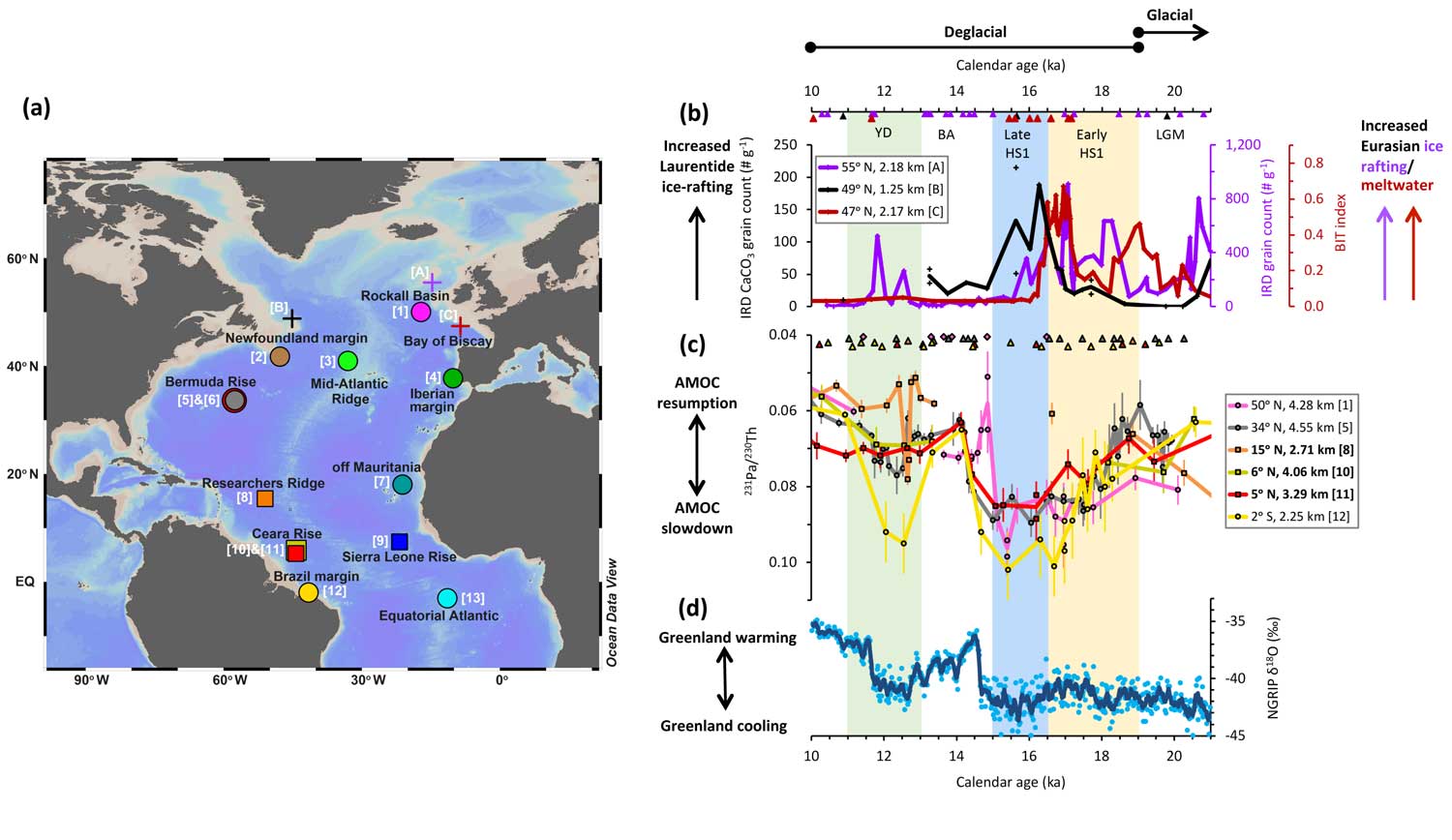The role of melting-ice in driving the slowdown of circulation in the western Atlantic Ocean revealed by protactinium-thorium ratio
Abrupt climate changes in the past have been attributed to variations in Atlantic Meridional Overturning Circulation (AMOC) strength. Knowing the exact timing and magnitude of the AMOC shift is important to understand the driving mechanism of such climate variability. After a thorough selection of 13 sediment cores, the authors show that the proxy Protactinium-231-Thorium-230 (231Pa/230Th) exhibits remarkably consistent changes both in timing and amplitude over the last 25 thousand years (kyr) in the West and deep high-latitude North Atlantic. This consistent signal reveals a spatially coherent picture of western Atlantic circulation changes over the last deglaciation, during abrupt millennial-scale climate transitions. At the onset of deglaciation, an early slowdown of circulation in the western Atlantic is observed consistent with the timing of accelerated Eurasian ice melting, followed by a persistence of this weak AMOC for another millennium, corresponding to the substantial ice rafting from the Laurentide ice sheet. This timing indicates a role for melting ice in driving a two-step AMOC slowdown. This work also emphasizes that 231Pa/230Th, under thorough criteria, could hold as pertinent proxy of ocean circulation.

Figure: Use of sedimentary 231Pa/230Th to interpret changes in Atlantic Meridional Overturning Circulation (AMOC) strength and its link to climate variations over the past 25 thousand years. (a) Location map of 231Pa/230Th records [1]–[13] and ice melting proxy records [A]–[C] presented in this study, (b) North Atlantic ice rafting records (IRD) and a proxy record of Eurasian meltwater discharge (BIT index), (c) selected West and high-latitude North Atlantic 231Pa/230Th records, (d) Northern Greenland temperature proxy record. The AMOC slowdown observed (c) is consistent with the timing of an increased Eurasian ice melting (b). Click here to view the figure larger.
Reference:
Ng, H. C., Robinson, L. F., McManus, J. F., Mohamed, K. J., Jacobel, A. W., Ivanovic, R. F., Gregoire, L. J., Chen, T. (2018). Coherent deglacial changes in western Atlantic Ocean circulation. Nature Communications, 9(1), 2947. http://doi.org/10.1038/s41467-018-05312-3
